|
Tijuana's Modernism
By Maria E Curry
September/October 2020
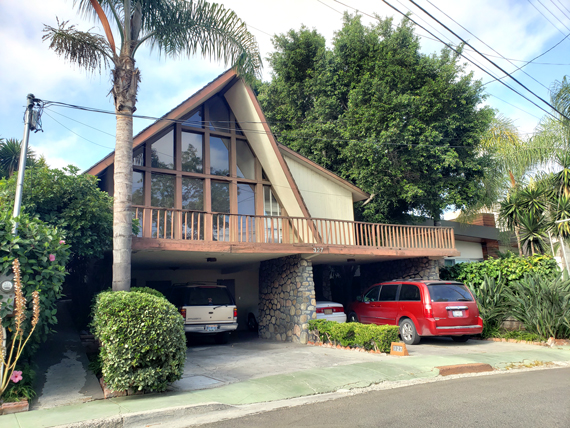 Tiki Polynesian style house in Colonia Chapultepec. Photo by Maria Curry, August 2020 |
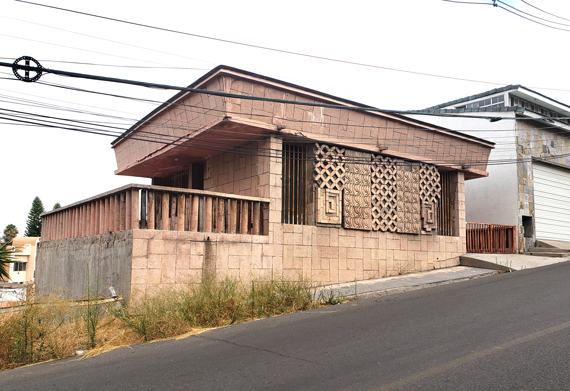 House with pre-Hispanic inspired motifs from Oaxaca in Colonia Chapultepec, Tijuana. Photo by Maria Curry, August 2020 |
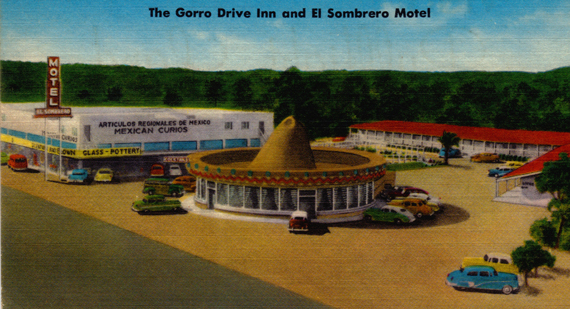 |
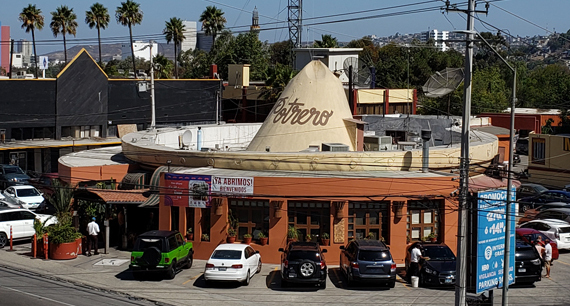 Built in 1942 in the Googie style, El Potrero Restaurant was originally named The Gorro Drive Inn and El Sombrero Motel. Still in business today, however, around 2009 an addition was built that blocks the original design. Postcard image courtesy posdatatijuana.wordpress.com. Current day photo by Andres W Espinoza |
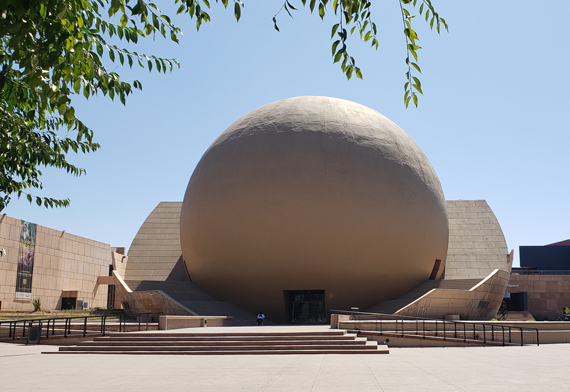 Cultural Center in Tijuana (1982) designed by architects Pedro Ramírez Vázquez and Manuel Rosen. Brutalism style. Paseo de los Heroes Avenue, Zona Río |
Developing a historic context for Tijuana's Modernist architecture is not easy. Unable to keep pace with urban planning, the city's rapid and erratic growth has led to development patterns and stylistic trends dispersed throughout the city, making them difficult to identify and interpret. However, we need to document as many Modernist buildings as seem relevant now, before they are lost forever.
Due to its unique location and historical development, the cultural influences in Tijuana's Modern architecture are regionally and nationally inspired.
California has always been a source of regional influence. The Agua Caliente Casino and Resort designed by the American Wayne McAllister in 1928 introduced several architectural styles in Tijuana. Craftsman bungalows were replicated in downtown houses. Hotels built in the 1920s through 1950s showed the influence of California-style Art Deco and Streamline Moderne architecture. Important buildings in downtown Tijuana built by American architects from 1920 through the 1930s include the Jai Alai Palace, the old Municipal Palace (city hall), and the old train depot. It was common to move houses from San Diego to Tijuana until the 1960s. The Francis Hotel (1905) was moved from Imperial Beach. There were also Googie style gas stations, hotels, restaurants, and drive-ins, such as the Sombrero and the Big Boy restaurants in Avenida Agua Caliente. Many Modernist houses in wealthy neighborhoods were also inspired by California houses.
Nationally, the federal government has had a hand in introducing Modernist architecture. Architects and planners from Mexico City have contributed schools, post offices, housing developments, cultural centers, and federal facilities. The landmark, spherical Tijuana Cultural Center (1982) is an example of Brutalism, and the downtown Post Office (1957) is in the International Style. Infonavit (Institute of the National Fund for Workers' Housing) housing developments for low-income people (1972), and the federal middle and high schools that replaced Agua Caliente (1940s) incorporate Art Deco and Functionalist, or rational, features.
Modernism in Tijuana is historically significant and deserves deep evaluation and policies to protect it before all the worthy examples disappear.
|
2025
2024
2023
2022
2021
2020
2019
2018
2017
2016
2015
|








